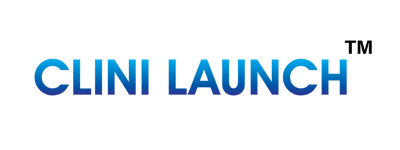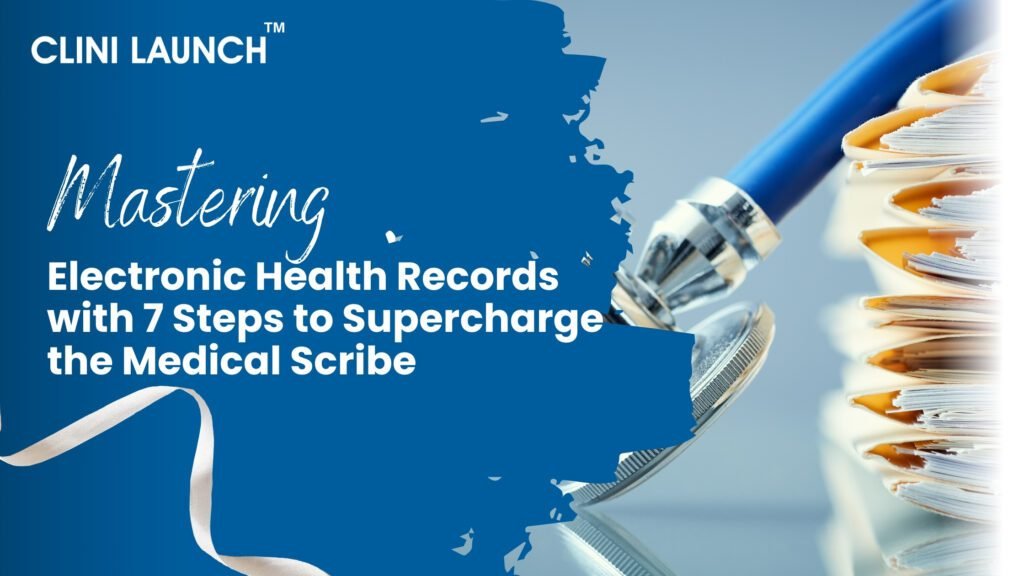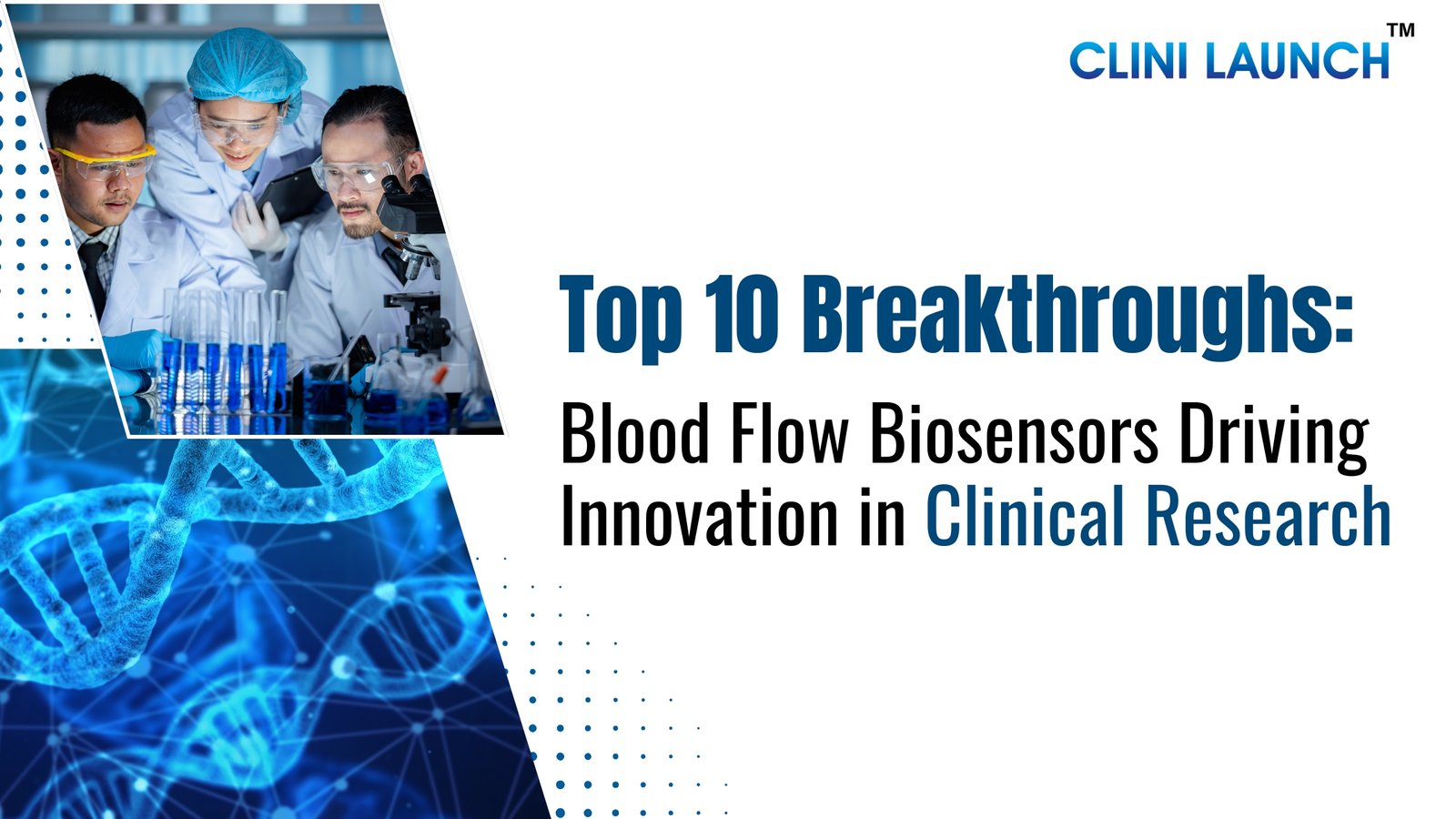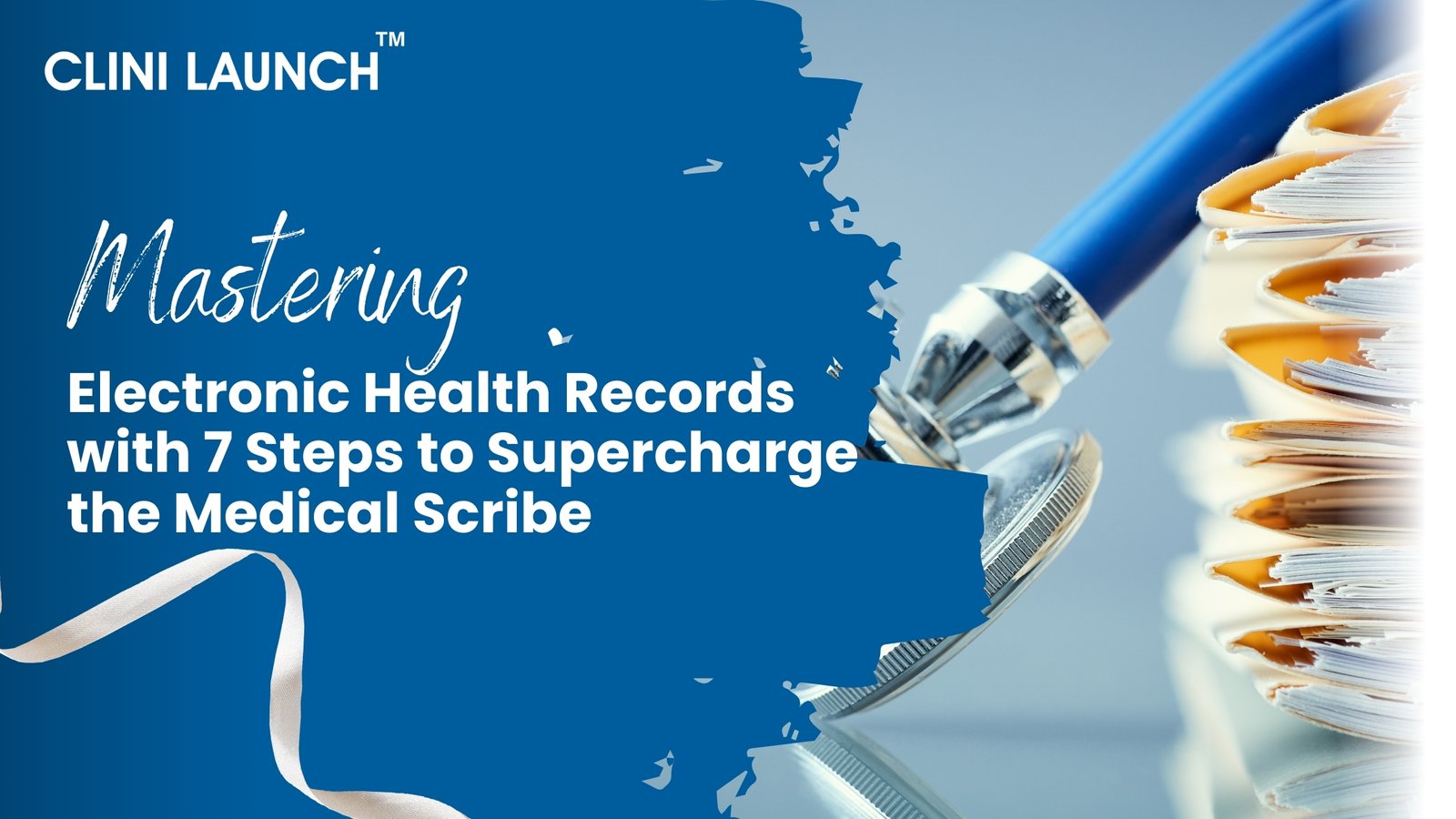In the rapidly evolving landscape of healthcare, technology plays an increasingly vital role in enhancing efficiency, accuracy, and the overall quality of patient care. Among the most transformative technological advancements in recent decades is the widespread adoption of Electronic Health Records (EHRs). For medical scribes, who serve as crucial administrative and clinical support personnel, a deep understanding and mastery of EHR systems are no longer optional but rather fundamental to their success and the smooth functioning of healthcare practices.
This comprehensive guide aims to provide medical scribes with an in-depth exploration of Electronic Health Records, encompassing their definition, significance, interaction with scribes, benefits, challenges, best practices, and future trends. By delving into the intricacies of electronic patient records and electronic medical records, this blog seeks to empower scribes to not only navigate these systems effectively but also to leverage their capabilities to contribute meaningfully to the delivery of exceptional patient care.
Enroll Now: Medical Scribe
Understanding the Fundamentals: Defining Electronic Health Records
At its core, an Electronic Health Record (EHR) represents a digital version of a patient’s paper chart. Going beyond simply digitizing existing documents, a comprehensive EHR encompasses a wide array of patient information, including medical history, diagnoses, medications, treatment plans, immunization dates, allergies, radiology images, and laboratory and test results. The key differentiator of an EHR lies in its ability to share information with other healthcare providers and organizations involved in a patient’s care – thus fostering better coordination and continuity of treatment.
Often used interchangeably, the terms electronic patient record and electronic medical record hold subtle distinctions. While an electronic medical record (EMR) primarily focuses on the patient’s information within a single healthcare setting, an electronic patient record (EPR) aims for a more holistic view, integrating data from various sources and facilitating seamless information exchange across different healthcare providers and institutions. In practice, modern EHR systems often incorporate functionalities of both EMRs and EPRs, striving towards a comprehensive and interoperable patient health record.
How Medical Scribes Engage with EHRs
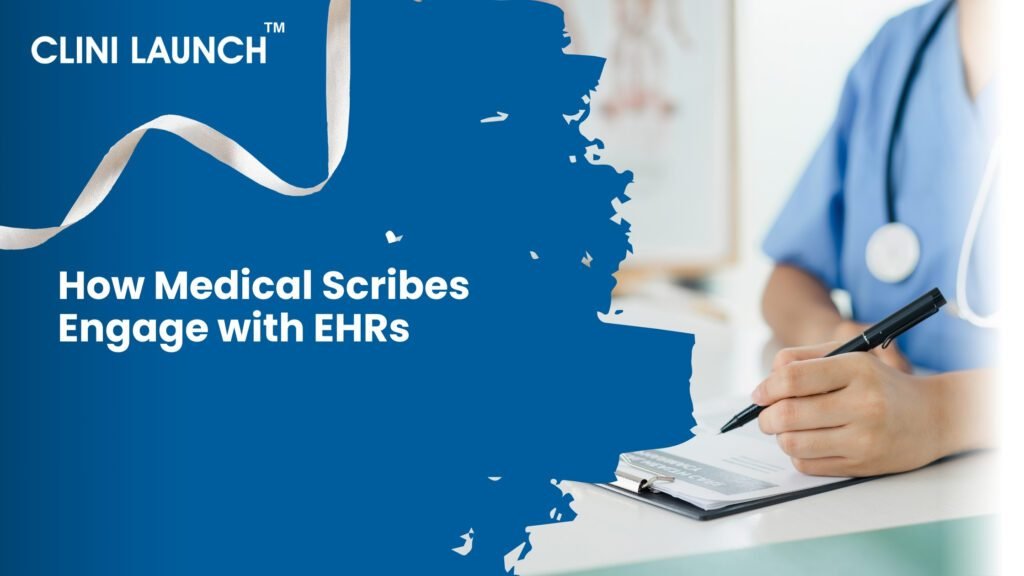
Medical scribes are integral to the efficient utilization of EHR systems, primarily through real-time documentation under the supervision of healthcare practitioners. This interaction with electronic health records manifests in several critical ways:
Real-time Documentation: Scribes contemporaneously recording patient encounters directly into the EHR. This immediate documentation allows physicians to concentrate on the patient, fostering better interaction, and ensuring accurate and prompt information capture. Scribes use their knowledge of medical terminology and clinical workflows to input data into the EHR system, navigating various sections of the electronic patient record and utilizing templates.
Order Entry: With appropriate training and authorization, scribes may assist physicians with order entry in electronic health records. They can initiate orders for tests, medications, and referrals under direct physician guidance. This enhances efficiency by freeing up physician time. Scribes must understand the EHR ordering process to ensure accuracy in selecting items and entering necessary details.
Chart Review and Preparation: Scribes proactively review the patient’s existing electronic patient record before encounters. This allows physicians to be better prepared with information on past medical history, medications, and recent results. Scribes synthesize this data, providing a concise summary to the physician for more focused consultations and personalized management plans.
Information Retrieval: Scribes efficiently retrieve specific patient information from electronic health records as needed by physicians during or after encounters. Their familiarity with the EHR system enables quick access to lab values, notes, or imaging reports, crucial for informed decision-making and comparing historical data.
Maintaining Chart Accuracy and Completeness: Scribes ensure the accuracy and completeness of electronic medical records by meticulously documenting all relevant information from patient encounters into the appropriate EHR sections. This includes physical exam findings, symptoms, diagnoses, and treatment plans, adhering to guidelines, and ensuring a reliable medical record.
Navigating the EHR Interface: Proficiency in navigating the specific healthcare facility’s EHR system is fundamental for scribes. They become skilled in using the interface to access patient charts, different modules, search functions, and workflows for documentation, patient demographics, and report generation, facilitating efficient task completion and information accessibility.
Advantages of EHRs for Scribes and Healthcare
The implementation of Electronic Health Records offers substantial benefits for medical scribes and the broader healthcare landscape:
Enhanced Efficiency: Real-time scribe documentation significantly reduces physicians’ administrative burden, allowing them to dedicate more time to patient care, complex cases, and improved patient access. EHR-facilitated streamlined workflows, such as electronic order entry, further contribute to efficiency.
Improved Accuracy and Legibility: EHRs eliminate issues associated with handwritten notes, ensure more accurate and understandable medical records, reduce the risk of misinterpretations, and enhance patient safety. Standardized medical terminology within EHRs also improves consistency.
Streamlined Workflow: Modern EHR systems feature templates, standardized order sets, and automated alerts, contributing to a more efficient and organized workflow. scribes leverage these features, along with electronic prescription transmission and referral generation, for a more integrated patient care experience.
Better Information Access and Management: EHRs provide immediate access to comprehensive patient histories, enabling informed clinical decisions. Scribes can quickly retrieve necessary details, giving physicians a complete understanding of the patient’s health status and leading to better diagnoses and treatment plans.
Enhanced Communication and Coordination: EHRs facilitate the electronic sharing of patient information among healthcare providers and institutions, improving communication and ensuring continuity of care. Accurate scribe documentation within the EHR contributes to a complete and up-to-date record for all professionals involved.
Increased Patient Safety: EHR systems incorporate safety features like drug interaction and allergy alerts, and clinical decision support tools, which help prevent medical errors. Scribes contribute by accurately documenting patient information and utilizing these safety features within the EHR.
Data Analysis and Reporting Capabilities: EHRs enable the collection and analysis of patient data for quality improvement, research, and population health management. This capability supports evidence-based practices and advancements in medical knowledge.
Navigating the Challenges: Addressing Obstacles in EHR Utilization
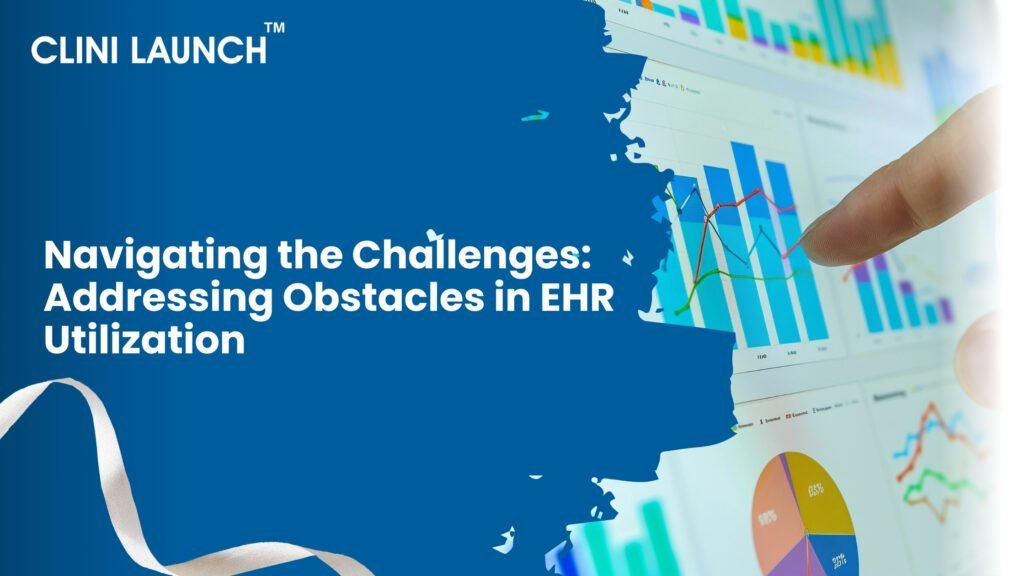
Despite the numerous advantages of Electronic Health Records, their implementation and effective utilization are not without challenges for medical scribes and healthcare organizations.
Learning Curve and Training: The adoption of a new EHR system or significant updates necessitates a learning period. Different vendors offer varied interfaces and functionalities, demanding comprehensive training for proficiency. Healthcare organizations must invest in thorough training programs to equip medical scribes with the skills for effective navigation and utilization. Ongoing support is crucial for adapting to system updates and ensuring optimal performance.
Technical Issues and System Downtime: EHR systems, like all technology, are susceptible to technical issues and downtime, which can disrupt workflows and impede access to patient information. Healthcare organizations must maintain robust technical support and establish contingency plans, potentially involving temporary reversion to paper-based documentation, to ensure uninterrupted patient care during system disruptions.
Data Entry Burden: Accurately and comprehensively documenting patient encounters within EHRs can be time-intensive for medical scribes. Balancing efficiency with thoroughness is critical. Utilizing available tools like templates and shortcuts can streamline the process without compromising the quality and completeness of the medical record.
Maintaining Data Security and Privacy: Protecting sensitive patient health information within EHRs is paramount. Adherence to regulations like HIPAA requires stringent security measures, including access controls, strong passwords, and vigilance against unauthorized disclosure. Thorough training on data security policies is essential for all medical scribes.
Interoperability Issues: While the goal is seamless information exchange, challenges persist when different healthcare facilities utilize disparate EHR systems that lack full interoperability. This can hinder the easy sharing of patient information. Ongoing efforts are focused on improving interoperability through standardized data formats and exchange protocols. Understanding these challenges and potential solutions is important for medical scribes.
Alert Fatigue: The proliferation of alerts within EHR systems, including drug interaction warnings and critical value notifications, can lead to alert fatigue if not properly managed. Healthcare organizations must carefully configure these systems to minimize non-essential alerts and ensure that critical warnings remain prominent and receive appropriate attention.
Best Practices: Strategies for Effective EHR Utilization by Medical Scribes
To maximize the benefits of Electronic Health Records and effectively address the associated challenges, medical scribes should consistently integrate key best practices into their daily routines.
Comprehensive Training: Foundational to effective EHRs use is thorough initial training on the specific system in place. This should encompass all relevant functionalities for a medical scribe’s role, including interface navigation, documentation procedures, order entry, information retrieval, and template utilization. Continuous learning through ongoing training and refresher courses is vital to stay current with system updates and optimal utilization strategies.
Continuous Learning and Adaptation: The dynamic nature of healthcare technology, with frequent updates and evolving regulations affecting EHR systems, necessitates a commitment to continuous learning. Medical scribes should proactively seek opportunities to enhance their skills and knowledge through webinars, training materials, and collaboration with experienced colleagues, ensuring they remain proficient and adaptable.
Accurate and Timely Documentation: The integrity of electronic health records hinges on the accuracy and timeliness of documentation. Medical scribes are responsible for precisely capturing all pertinent details of patient encounters, including history, physical findings, diagnoses, and treatment plans, using appropriate medical terminology and adhering to established guidelines.
Effective Use of Templates and Shortcuts: EHR systems offer tools like templates, macros, and shortcuts designed to enhance documentation efficiency. Medical scribes should master these features to expedite data entry and ensure consistency, thereby improving productivity without sacrificing the quality of the medical record.
Maintaining Professional Conduct and Confidentiality: Access to sensitive patient information through EHR systems demands the highest standards of professional conduct and adherence to strict confidentiality policies. Medical scribes must always respect patient privacy, avoid unauthorized access or disclosure, and maintain professional boundaries.
Clear and Concise Communication: Effective communication with the healthcare team, particularly physicians, is essential for seamless workflow. Medical scribes should clearly and concisely communicate any questions or concerns related to the EHRs, documentation, or patient information, fostering a collaborative environment that optimizes patient care.
Attention to Detail: Meticulous attention to detail is crucial when documenting information in electronic health records. Accuracy and completeness are paramount to avoid errors with potential consequences for patient care, legal compliance, and reimbursement. Thorough review of all entries before finalizing is a critical habit for all medical scribes.
The Future Trajectory: Emerging Trends in EHR Technology
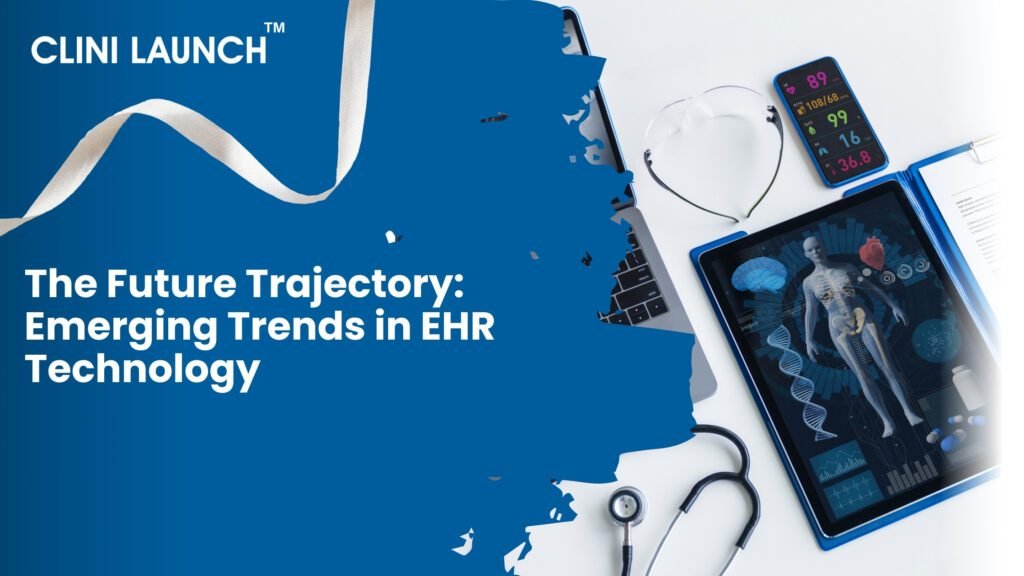
The landscape of Electronic Health Records continues to evolve, with several key trends poised to further transform healthcare delivery.
Enhanced Interoperability: A primary focus is the advancement of interoperability, enabling different EHR systems to seamlessly and securely exchange patient health information across various healthcare settings. Achieving true interoperability will facilitate more coordinated and comprehensive patient care.
Artificial Intelligence (AI) and Machine Learning (ML) Integration: The increasing integration of AI and ML into EHRs promises intelligent assistance at the point of care. These technologies can support clinical decision-making, automate tasks, identify patterns in patient data, and personalize treatment strategies, empowering healthcare professionals.
Cloud-Based EHR Systems: The adoption of cloud-based EHR solutions is growing due to their enhanced flexibility, scalability, and accessibility. These systems offer advantages such as easier updates, reduced infrastructure costs, and improved data backup and recovery.
Mobile EHR Access: The proliferation of mobile devices has led to the development of secure mobile applications for accessing EHRs. This allows healthcare professionals and medical scribes to conveniently view patient information and document encounters from smartphones and tablets, enhancing workflow flexibility.
Patient Portals and Engagement: EHRs are increasingly incorporating patient portals, providing patients with secure access to their health information and facilitating communication with their healthcare providers. This trend fosters greater patient involvement in their own care.
Focus on Data Analytics and Reporting: Future EHR systems will offer increasingly sophisticated data analytics and reporting capabilities. This will enable healthcare organizations to gain valuable insights for quality improvement, research, and population health management initiatives.
To Sum Up
Electronic Health Records stands as a cornerstone of modern healthcare, fundamentally transforming the way patient information is managed, accessed, and utilized. For medical scribes, the mastery of EHR systems transcends the mere fulfillment of documentation responsibilities; it signifies their crucial role as integral contributors to a healthcare ecosystem characterized by enhanced efficiency, heightened accuracy, and a profound commitment to patient-centered care.
By embracing a mindset of continuous learning, diligently adhering to best practices in EHR utilization, and proactively staying informed about the ever-evolving landscape of healthcare technology, medical scribes can significantly amplify their professional value and play an indispensable role in shaping the trajectory of healthcare delivery in the years to come. Their ability to effectively leverage the power of electronic patient records and electronic medical records will directly translate into improved workflows for physicians, enhanced communication among healthcare teams, and ultimately, better outcomes for patients.
Ready to elevate your expertise in navigating and leveraging the full potential of Electronic Health Records?
Embark on a transformative learning journey with the comprehensive training programs meticulously designed and offered by CliniLaunch Research, your trusted partner in professional development for the dynamic field of medical scribing. Gain a distinct competitive edge in this technologically advanced era of healthcare by acquiring the specialized skills and in-depth knowledge necessary to excel in your role.
Visit us today CliniLaunch Research, to explore our diverse range of programs and take the decisive first step towards a rewarding and impactful career in medical scribing!
References
How do Medical Scribes Interact with Electronic Health Records (EHRs)?
The future of medical scribes documenting in the electronic health record: results of an expert consensus conference
https://bmcmedinformdecismak.biomedcentral.com/articles/10.1186/s12911-021-01560-4

